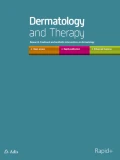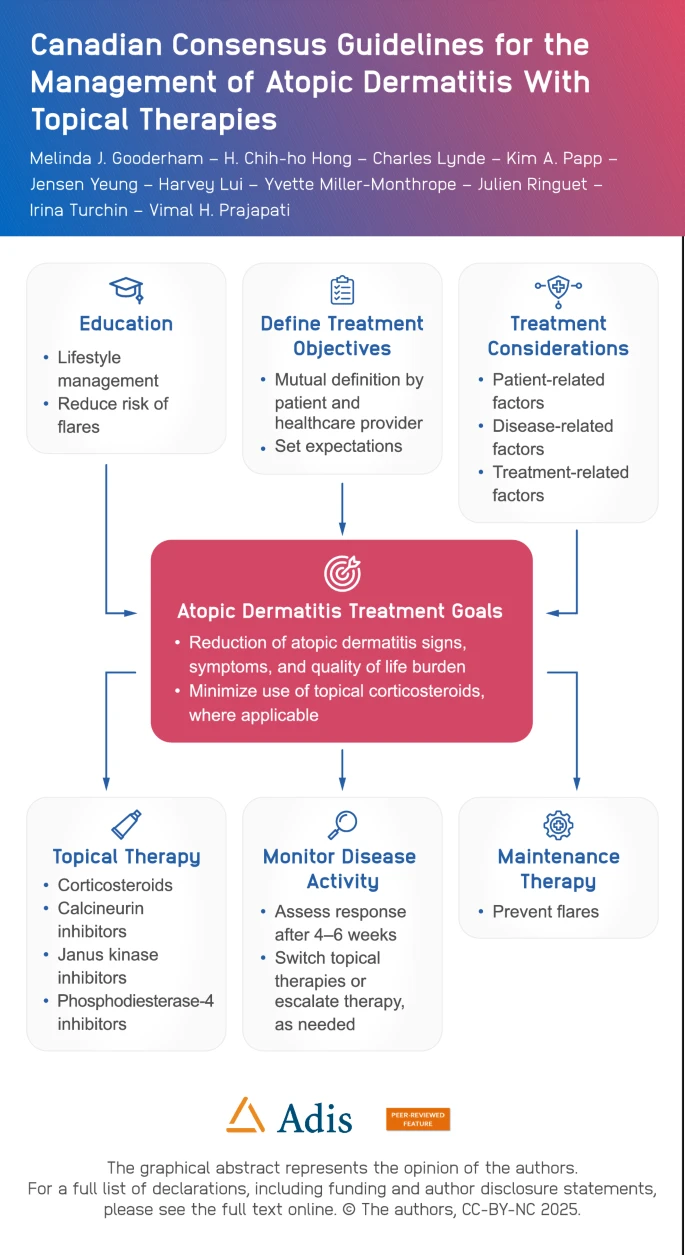Abstract
Introduction
Atopic dermatitis (AD) is a highly prevalent disease in Canada with significant patient burden. Treatment guidance for topical therapy (the mainstay of AD management), with particular consideration of emerging treatments, may further improve patient care. Here, we aim to provide healthcare professionals with AD treatment recommendations from the perspective of 10 Canadian dermatologists with expertise in managing AD.Methods
The panel of dermatologists conducted a systematic literature review and leveraged their clinical experience to develop generally accepted principles, consensus statements, and a treatment algorithm using an iterative consensus process.
Results
The panel collectively developed six generally accepted principles, 10 consensus statements, and a treatment algorithm. The guidance notes that assessment of disease severity should encompass both physician-rated measures and patient-reported outcomes. Disease education, lifestyle-based strategies (e.g., trigger avoidance), and supportive measures (e.g., moisturizers) can help reduce signs and symptoms of AD.
Choice of therapy should consider disease-, patient-, and treatment-related factors. Although topical corticosteroids (TCS) are often used as first-line treatment in AD, they should be limited to intermittent short-term use. Noncorticosteroid topical therapies (e.g., topical calcineurin inhibitors; topical phosphodiesterase-4 inhibitors; and topical Janus kinase inhibitors) can be used for widespread involvement of AD according to approved use. Once treatment goals are achieved, noncorticosteroid topical maintenance therapy should continue to prevent flares and reduce the need for TCS.Conclusion
Guidance reflecting the benefits and limitations of topical AD treatments in conjunction with patient understanding of treatment goals supports robust shared decision-making in the management of AD.


No comments:
Post a Comment